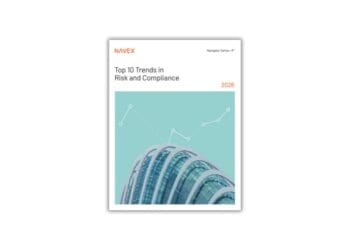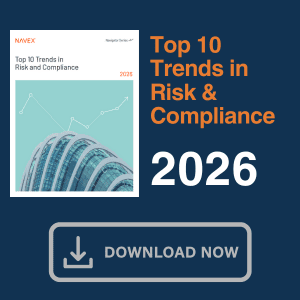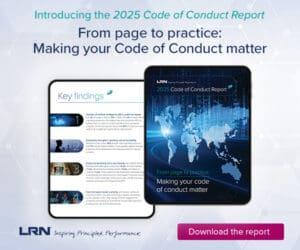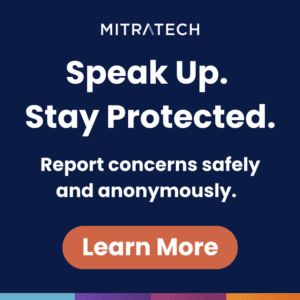The workplace of the future is being shaped by two powerful forces: the shifting mix of permanent and non-permanent talent, and the growing adoption of digital technologies. How companies address these trends can determine their success over the next decade.
The composition of the workforce is shifting between permanent and non-permanent talent – with non-permanent talent representing both the contractual fringe and the temporary, flexible workforce (the so-called gig economy). Then there is the growing adoption of all forms of automation, advanced analytics, machine learning (ML), deep learning, natural language processing and other elements trending toward artificial intelligence (AI) applications becoming a mainstay in the workplace.
These trends are framing the future of work, which according to a recent survey (PDF download) may well present the defining challenge of the coming decade for many businesses. As technology takes over mundane and repetitive tasks, it is expected to create different kinds of work and even new jobs, resulting in a significant shift in the mix and nature of employment functions for human workers. The skills gaps will necessitate significant upskilling and reskilling of existing employees and focused talent acquisition and retention, as well as partnering with available sources of higher education and credentials certifications.
This shift is happening now, with job growth and displacement expected to occur even within specific occupational categories. Back-office support, manufacturing functions, retail sales, food preparation and service, materials moving, extraction activities, health care support and periodic maintenance are examples of occupational areas that are being – and will continue to be – affected by the onslaught of AI-enabled technologies. On the other hand, the same digital technologies portend strong growth in such areas as STEM occupations, health care and analytical and creative fields.
These unmistakable trends require workers to adapt as technologies affecting the nature of work are embraced in the marketplace and demand grows for work involving socioemotional, creative, technological and higher cognitive skills. A common thread among shrinking job roles is that they involve many routine or physical tasks. But in addition to automating activities, there is the automation of intelligence. Because job roles affected by automation are distributed across the globe, no country, company or community is immune from automation-driven displacement.
2 Fundamental Questions and the Labor Model Frame the Discussion
With this evolving environment, boards and executive management are faced with the following questions:
What changes are in store for the workplace, the workforce and the nature of work itself in the industry in which we operate, and how does it affect our company and the way we acquire, develop and retain our people?
And more importantly:
How can we be sure we’re doing what we need to be doing to remain competitive?
These two questions are fundamental to the board’s oversight and the executive team’s management of workplace dynamics.
In thinking about the workplace of the future, it is important to recognize – as noted earlier – that companies are increasing their use of outsourcing and managed services providers, the so-called contractual fringe, as well as the contingent workforce that taps into the sharing of the gig economy, the so-called flexible labor force. These two sources of talent augment the permanent employees of the organization who perform the core activities underlying the strategy and business model.
As organizations transition their labor models by outsourcing non-core activities, deploying managed services providers to perform the work of different functions or tapping into the flexible labor force to address special needs or demand spikes, management and the board should keep a close eye on the demographic, social and technological trends affecting the industry, what competitors are doing and the effectiveness of internal processes for acquiring, developing and retaining key talent.
With this context, the following are several imperatives for executive management and the board of directors as they manage and oversee the evolving future of work.
Optimize the Blend of Technology and Human Resources in the Workforce
How is the company approaching its talent strategy given the ongoing digital transformation initiatives taking place? Obviously, there is the impact on human workers. But there also is the need to understand the nature and potential of “digital workers” (i.e., AI-enabled technologies). Thus, the organization must manage the confluence of resources in the workforce.
Many senior executives need help in defining exactly what AI is, for it involves not just the automation of tasks, but also intelligence itself. Given its projected impact of displacing job roles, there is often a knee-jerk reaction among companies to view implementation of AI technology as a means to reduce staff versus an opportunity to increase productivity elsewhere by upskilling workers. This limited perspective is a mistake.
In addition, with the use of AI comes the critical issue of cognitive bias. Humans, not the AI-enabled technologies, are responsible for creating datasets and algorithms. It is important that processes are in place to assure management of the efficacy of the individuals writing the algorithms. Organizations should deploy diverse teams and consider ethical and social responsibility when writing code and algorithms for AI systems. If they don’t, how does management know there isn’t a risk of bias in the algorithms used, unintentional or not? It also is critical to have a model validation process to assess whether models and algorithms perform as intended.
As to human resources, organizations should have a strategy for reskilling and upskilling workers to address skills gaps, training and encouraging employees to embrace new technologies and seek ways to enhance their value and productivity in other job roles and stepping up their long-term succession planning efforts.
Key Takeaway: The reality is that organizations are evolving toward an amalgamation of humans and AI-enabled technologies. Organizations should be aware of the latest technologies in the market affecting the future of work and evaluate their impact on the workforce (e.g., the implications of automating work to the organization and the industry).
Redefine the Organization’s Human Resource and Talent Management Programs
Considering the challenges involved with current and forthcoming changes in the workforce through implementation of AI-enabled systems and other digital technologies, executive management and the board should rethink their approach to oversight in this area. It is especially important to understand and possibly redefine the company’s talent management strategy to address the growing impact of digital labor (AI-enabled technologies).
The traditional HR function needs to become more than a personnel compliance, recruiting, performance assessment and compensation and benefits function. Given the new digital realities, its expanded role should be about collaborating with the organization’s operating units and functions to address talent development, upskilling, reskilling and training consistent with the company’s growth strategy, planned AI implementation and expected workforce disruption.
One size does not fit all. The sophistication of the HR and talent management function is likely different when comparing large, multinational organizations, where this function may already be highly complex, to small and midsize companies, which may be facing different challenges. For example, questions germane to the size and maturity of large, sophisticated companies might include whether they are getting the talent needed to execute their strategies and business models and manage the effects of automation on their workforces.
By contrast, smaller, growing companies might consider such questions as: “Do we understand our talent gaps?” “Have we considered whether we should increase our utilization of the contractual fringe or contingent workforce?” “Are we aware of the latest technologies affecting the future of work?” and “Are we evaluating the impact of evolving technology trends on our future workforce?”
Of course, there are questions that may apply to all organizations. For example: “Are we rejecting too many candidates who are otherwise qualified for the roles the organization must staff today as well as tomorrow because they are deemed unqualified based on what may be out-of-date or unduly stringent requirements (e.g., requirements such as “10 to 15 years of experience” or “ranked at the top of the class”)?”
Key Takeaway: Cracking the code on shaping the HR function and talent management program of the future is not easy. Organizations should think more broadly about talent management, recognizing that not all companies are alike. Who in the organization will help the board, executive team and company become better informed with regard to talent management and development over the long term? Leadership is needed on this front so the appropriate level of investment in onboarding, training and other talent development programs can be determined.
Redefine Compensation Programs as the Workplace Evolves
As organizations, the nature of work and the requisite skills to perform that work change, the traditional HR focus on compensation and benefits may need revisiting. Again, this is a discussion that creates more questions than answers, but suffice it to say that the two powerful forces – previously discussed – have an impact:
- As the labor model evolves and increases emphasis on deploying the contractual fringe and the flexible labor model, companies must focus on retaining the professional core they need to operate. The specialized skills required to source that core may reside in a smaller talent pool than has existed in the past. Therefore, matching skills with needs becomes a competitive challenge as labor markets tighten. That means companies need to be creative in how they reward a generationally diverse workforce.
- As digital labor made possible through AI, automation and cognitive solutions becomes more prominent, the organization should revisit the flow of the remaining work and new work that must be performed by humans as a result of digitization, including how the related job roles are defined, how the work is organized and how skills needed are sourced – whether through reskilling and upskilling or hiring and onboarding. Compensation and the reward system should figure into this assessment as management plans for the future.
#HRSutra 790: The concept of "number of days of work", "leave", "retirement", "work timings"…will no longer be important in a future workplace dominated by gig economy.
— D Prasanth Nair (@DPrasanthNair) January 25, 2019
Large, multinational entities may have already advanced significantly on this front.
Key Takeaway: As the workplace changes, management should shepherd the creation of a compensation program that reflects new concepts and designs, placing a premium on reimagining rewards and benefits that are effective in recruiting and retaining a diverse workforce in the evolving digital economy of today and tomorrow. Organizations need to think about innovative ideas such as sabbaticals, reduced work weeks and flexible and remote work options while also offering attractive compensation packages beyond traditional pay models.
Focus on Corporate Social Responsibility (CSR) and Community Outreach
Organizations should become more aware of how they impact not only their workforce, but also the communities of which they are a part and where they do business. The “Statement on the Purpose of a Corporation” issued by the Business Roundtable in 2019 asserted that the corporation has “a fundamental commitment” to deliver value to all its respective stakeholders, consisting of customers, employees, suppliers, communities and shareholders. It also states that each stakeholder group is essential and that it is vital to deliver value to all of them, as the success of the corporation, the communities in which it operates and the country in which it is domiciled are inextricably linked.
As to employees, this corporate commitment means rewarding people for hard work and creativity such that they are able to lead a life of meaning and dignity. It means generating good jobs and economic opportunity. It requires fair compensation, important benefits and appropriate support through training, education and skills development in a rapidly changing world. It demands a diverse, inclusive and agile culture in which employees reskill and upskill themselves continuously over time.
This CSR mantra – or the “S” in ESG – offers a broader backdrop and context to the company’s deployment of human capital. Senior management and the board should not only monitor how the workforce is being managed in the evolving world of work, but also understand how the organization engages, enables and sustains its cultural health, which is becoming an increasingly important priority among younger generations and the marketplace. This perspective tees up such considerations as:
- Achieving diversity across the organization – Given impending talent shortages in the future, a focus on developing long-term strategies for building diversity, equity and inclusion throughout the workforce and leadership ranks is a strategic imperative.
- Solving diversity challenges may also be an industry imperative – Talent and workforce diversity may be key to growth in both the company and the industry. For example, the challenges associated with women in the so-called STEM occupations are well-known.
- Funding support of higher education – Improved partnerships between corporations and higher education would help align curricula with the business needs.
- Supporting alternative forms of education in lieu of traditional four-year degrees – Other forms of education such as credentials certifications can produce the skilled personnel organizations need for the future at a reasonable cost.
- Eliciting proactive HR support is essential to success – With respect to many of the above issues, it is imperative that HR be on board and a proactive participant in addressing them. Otherwise, the function ends up being an impediment to the process.
Key Takeaway: A sustainability mindset can help companies differentiate themselves in their quest for the best and brightest talent. This mindset can also help boards bring a big-picture, principled approach to their oversight of human capital management.
Final Thought: When Necessary, Drill Deeper
The changing dynamics of the workplace is an area where everyone is learning, the potential magnitude of the disruptive environment is staggering and most everyone is searching for answers in a changing world not contemplated by traditional HR playbooks. In drilling deeper, executives and directors should rely on their own experiences and be reluctant to accept, without challenge or further inquiry, traditional standards and historical mores and requirements that may no longer be fit for purpose in the digital age.



 Jim DeLoach, a founding
Jim DeLoach, a founding 






